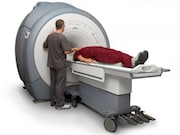Low-dose whole-body CT recommended over conventional skeletal survey for detection of bone disease
TUESDAY, June 18, 2019 (HealthDay News) — In a review published in the June 1 issue of The Lancet Oncology, recommendations are presented for use of newer imaging techniques for the diagnosis of multiple myeloma.
Jens Hillengass, M.D., from the Roswell Park Comprehensive Cancer Center in Buffalo, New York, and colleagues established guidelines on optimal use of imaging methods at different stages of multiple myeloma, given the numerous options available for detection of bone and bone marrow lesions.
Noting that 80 to 90 percent of all patients with multiple myeloma develop bone disease, the authors emphasize the importance of a thorough assessment of the degree of skeletal involvement and damage to structural integrity. Low-dose whole-body computed tomography (CT) is recommended over conventional skeletal survey for bone disease in multiple myeloma. Because novel imaging techniques are not available everywhere and financial and other considerations impact imaging use, conventional skeletal survey can be used when whole-body CT or other novel methods are unavailable. Magnetic resonance imaging (MRI) of the spine and pelvis is an acceptable alternative to whole-body MRI. Position emission tomography/CT can be used instead of whole-body CT; however, the CT part must fulfill the criteria of a diagnostic whole-body CT.
“Use of newer imaging techniques is changing the whole landscape, from diagnosis to treatment to supportive care to survivorship, and all those things are coming into this direction of research in multiple myeloma right now,” Hillengass said in a statement.
Several authors disclosed financial ties to the pharmaceutical industry.
Copyright © 2019 HealthDay. All rights reserved.








